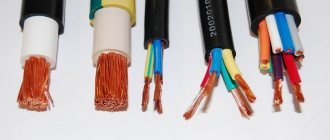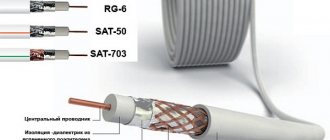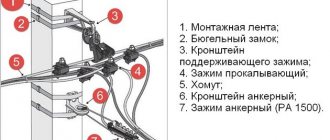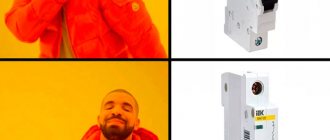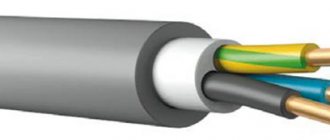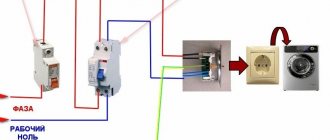Aluminum conducts current and is one of the best conductors in existence. It is used to make conductive busbars, cable lugs and sleeves, cable for overhead power lines, self-supporting insulated wire (self-supporting insulated wire) and wires of smaller cross-section (for domestic or industrial needs), coaxial television cable.
Does aluminum conduct electricity or not?
We will send the material by email
Aluminum conducts current and is one of the best conductors in existence. It is used to make conductive busbars, cable lugs and sleeves, cable for overhead power lines, self-supporting insulated wire (self-supporting insulated wire) and wires of smaller cross-section (for domestic or industrial needs), coaxial television cable.
Metal resistance
Aluminum conducts current well; it is a metal with a low specific gravity and can be easily cast and processed in other ways. The electrical conductivity indicator puts it in 4th place, second only to silver, copper and gold.
Interesting! Although aluminum is better than copper in a number of characteristics, in long-term use it is not so preferable due to its high fragility and brittleness.
Regarding the resistance indicator of aluminum, 2 terms are distinguished in the electrical industry:
- The value of electrical conductivity, the value of which characterizes the speed of transmission of electric current from point “A” to point “B”. The higher the number, the better the metal transports voltage. For example, at a temperature of 20°C, copper has a value of 59.5 million cm/m (Siemens per meter). Aluminum is only 38 million cm/m.
- Electrical resistance indicator. The higher the value, the more difficult it is to transmit electricity. The specific indicator of copper wire is 1.01724-0.0180 μOhm/m (microOhm - meter), aluminum - 0.0262-0.0295 μOhm/m.
Important! In a word, aluminum is a good conductor of current. It has excellent conductivity and resistance, but is still inferior to copper.
A good conductor is electricity - Great Encyclopedia of Oil and Gas, article, page 1
A good conductor is electricity.
Page 1
Good conductors of electricity are those bodies in which electrical particles can move freely. The electrical conductivity of metals is due to the fact that some of the electrons contained in the metal are in a mobile state. Such electrons are called free electrons or conduction electrons. [2]
Aluminum is a good conductor of electricity; Alumina hydrate does not conduct current. The design of an electrolytic rectifier with an aluminum anode is based on this difference. The cathode can be iron, lead, coal. The electrolyte is a saturated solution of ammonium carbonate. This rectifier can be assembled by students themselves. [3]
The first of them are good conductors of electricity, the second do not conduct electric current. [5]
These coatings are also a good conductor of electricity. [7]
Why silver and copper are good conductors of electricity. [8]
In general, metals are good conductors of electricity, especially copper and aluminum. [9]
A solution of NaNh3 in liquid ammonia is a good conductor of electricity, which indicates the ionization of this substance in the solvent. The structures of amides, both simple and complex, are very similar to the structures of halides and hydroxides. For example, high-temperature modifications of potassium, rubidium and cesium amides belong to the NaCl structural type, but at ordinary temperatures these compounds have a less symmetrical structure. [10]
Metals usually include simple substances that are good conductors of electricity (conductors of the first kind) and heat, with a characteristic metallic luster (high ability to reflect light), opacity, viscosity, malleability, and ductility. Metallic properties are retained only in solid and liquid states; they disappear in vapor. [eleven]
All metals are known to be not only good conductors of electricity, but also good conductors of heat. From the point of view of electronic theory, this coincidence is not explained by simple chance, but is a consequence of one common cause - the presence of free electrons in metals. In metals, unlike non-conductors, heat is transferred not only by collisions of atoms, but also, and predominantly, by free electrons. Acquiring additional motion energy in a heated area, easily mobile electrons relatively quickly transfer it in their movement to adjacent areas of the body and thereby significantly accelerate the process of thermal conduction. [12]
All metals are known to be not only good conductors of electricity, but also good conductors of heat. From the point of view of electronic theory, this coincidence is not explained by simple chance, but is a consequence of one common reason - the presence of free electrons in metals. In metals, unlike non-conductors, heat is transferred not only by collisions of atoms, but also, and predominantly, by free electrons. Acquiring additional motion energy in a heated area, easily mobile electrons relatively quickly transfer it in their movement to adjacent areas of the body and thereby significantly accelerate the process of thermal conduction. [13]
All metals are known to be not only good conductors of electricity, but also good conductors of heat. From the point of view of electronic theory, this coincidence is not explained by simple chance, but is a consequence of one common cause - the presence of free electrons in metals. In metals, unlike non-conductors, heat is transferred not only by collisions of atoms, but also, and predominantly, by free electrons. Acquiring additional motion energy in a heated area, easily mobile electrons relatively quickly transfer it in their movement to adjacent areas of the body and thereby significantly accelerate the process of thermal conduction. [14]
An aqueous solution containing ions serves as a good conductor of electricity. In general, the higher the ionic concentration, the better the solution conducts current. Nonionic solutions do not conduct current. This simple distinction helps to classify substances. Those whose aqueous solutions are conductors are called electrolytes; the same substances whose solutions do not conduct electricity are called non-electrolytes. [15]
Pages: 1 2 3 4
www.ngpedia.ru
Other properties
Today, aluminum is produced almost twice as much as copper. And in comparison with all mined metals, it is second only to steel. This confirms that every year the electrical industry is increasing its use. This is explained by a number of reasons, which we will consider further.
Electrical performance of aluminum
According to the International Annealed Copper Standard (IACS), the latter is rated as 100% conductive. According to the above information, aluminum conducts electricity at only 61% equivalent to the generally accepted standard.
Thus, an equal percentage will only be achieved with larger cross sections. Since copper is significantly heavier than aluminum, such an “increased” conductor in mass will still be lighter than copper.
This fact has been proven through complex mathematical calculations, the result of which shows that 1 kg. aluminum provides equal conduction speed to that of 2 kg. copper Therefore, if certain technical conditions for the size of conductors do not require this, copper is replaced with aluminum.
Healthy! If for use in home wiring the weight of an electric wire does not have a special role, then when used on overhead power lines (overhead power lines), the weight of the current-carrying conductors has a significant effect. Therefore, take the one that is lighter, that is, aluminum.
Strength index
Provided the cross-section is the same, copper conductors are stronger than aluminum conductors. Although, this figure can be easily increased by alloying or thermomechanical treatment, or by increasing the cross-section.
The values given in the table show that aluminum conducts current, but is inferior to copper in terms of “break strength”. However, it is able to withstand its own weight and does not overload the overhead power line supports as much as copper.
In addition, extruding aluminum involves obtaining cross-sections of complex shapes, which cannot be obtained from steel. Based on such objective reasons, new elements can be designed in such a way that they will be the most effective in comparison with acceptable analogues from other materials.
Corrosion resistance
Aluminum does not require additional painting or zinc coating to protect against corrosion. The natural oxide coating protects the metal from subsequent contact with oxygen in the air and prevents further oxidation.
Interesting! If the protective oxide layer is mechanically damaged, it is instantly restored naturally
Life time
The duration of operation depends on a number of conditions. First of all, it is temperature and humidity. Although the official figures are 30 years for copper and 15 for aluminum, in practice cables last much longer. As an example, we can cite houses built by Stalin or Khrushchev. Some of them still have their original electrical wiring. However, official information is announced in precisely these terms.
Interesting! Sometimes the opinion is expressed that such electrical wiring in the house is dangerous and can lead to fire as a result of overheating of the contacts. But this can happen to any metal, and the reason lies not in its properties, but in a poor connection or overload of the line. Similar incidents often happen in Soviet-built houses. When designing apartments in the 70-80s. of the last century, no one imagined that in a few decades they would be “filled” with electrical appliances requiring a larger cross-section.
Useful tips
In conclusion, here are a few tips that should be taken into account when organizing wiring:
- In case of independent design of wiring in a house or apartment, it is better to choose copper wires. With a smaller cross-section, they can withstand greater currents and are more resistant to frequent bending. An equally important point is volume. Copper wires are compact, which simplifies the process of creating grooves. For example, when connecting a receiver with a power of 7-8 kW, the aluminum wire should have a cross-section of about 8 mm. The cable has three cores plus a braid. As a result, the total diameter is about 1.5 centimeters. For comparison, copper can have a cross-section of 4 sq. mm, and the overall diameter is no more than a centimeter.
- When installing a socket, a three-core cable with a ground wire must be used. The distance of the socket from the floor is 30 cm. When organizing a lighting circuit, it is allowed to use cables with two cores (grounding is not needed here).
- It is forbidden to hang the entire load on one pair of wires (especially if they are aluminum). The best option is to divide the circuit into several lines. For example, a bathroom is powered through one machine, lighting through another, a kitchen through a third, and so on. The wire cross-section for the kitchen and bathroom should be 4 or 6 sq. mm, and for the lighting circuit - 1.5 or 2.5 mm.
The most difficult situation is in old apartments where aluminum wires are installed, which have outlived their useful life and require replacement. Wiring with a cross-section of 2.5 sq. mm can withstand a load of no more than 20 Amps, which is not enough for modern electrical receivers. In addition, the insulation of the wires loses its elasticity over time and gradually deteriorates. In such a situation, the only solution is to completely replace the wiring with copper wires.
For more information on why it is worth replacing aluminum wiring with copper in an old house, watch this video:
Copper and aluminum
The need to replace a section of electrical wiring may arise under various circumstances (damage, installation of an additional branch, other reasons). In this situation, “copper to copper” or “copper to aluminum” is connected. Contacts made of different metals require special attention, and the reason lies in the following:
- They differ in different resistivities. Even a tightly screwed contact will weaken over time due to aluminum's tendency to thermal expansion.
- Copper also has an oxide protective film. However, it differs from aluminum in different resistances, as a result of which this is reflected in an increase in the contact temperature.
Important! Connections under load can become a source of sparks, which negatively affects the conductor capacity and can cause a fire.
The connection of copper and aluminum wire is acceptable. However, to do this you must adhere to the following methods:
- Pre-tin the copper with a soldering iron and solder.
- Treat the contact with a special anti-oxidation lubricant.
- Use special metal devices (adapters): “Nut”; Made of 3 parallel plates, in which a current-carrying core is laid between the outer ones; Self-clamping or screw terminal blocks; Crimping; Bolted connection; Spring terminals.
Rules for connecting copper and aluminum
There are situations when you need to replace only part of the wiring or add (move) several outlets in the apartment. In such a situation, the question arises of how to properly connect wires made of different metals. To avoid increased heating in places where copper and aluminum wiring are combined, it is worth using the following switching methods:
- A “nut” type connection. In this version, the wires are clamped between special plates (there are three in total). First, the plates are unscrewed at the top and bottom, after which a wire is inserted between the middle and top clamps. At the last stage, the product is tightened. The same manipulation is done on the other side.
- Connection using a bolt. This type of fastening is similar to a “nut” with the only difference being that the two wires are combined and placed on one bolt with a washer installed between them. Next, fixation is done using a nut.
- Spring terminals. If the wiring is completely changed, it is better to use WAGO type terminal blocks. Their feature is ease of installation and convenient fastening of wires, thanks to the spring type of clamps. Before using such terminals, it is important to first strip the cable at a distance of 13-15 mm at the edges. After this, the wire is inserted into the hole and secured with small levers. A special lubricant is provided in the middle part of the terminals to prevent metal oxidation.
The use of spring terminals is only permissible in the lighting network. The flow of a large load leads to heating of the terminal block springs, deterioration of the quality of contact and, accordingly, a decrease in conductivity.
- Terminal blocks are one of the best options for combining copper or aluminum wires. The product is a strip made of dielectric material with a metal strip and terminal blocks for clamping. During installation, you need to clean the edges of the cable, insert it into the holes and squeeze it well.
The considered connection methods can be used to combine wires made of various metals (not only copper and aluminum). This design guarantees a high level of safety and the ability to avoid potentially dangerous twisting. But it is worth remembering the importance of periodically checking and tightening bolted connections and terminal blocks, because they tend to loosen.
Other properties
Today, aluminum is produced almost twice as much as copper. And in comparison with all mined metals, it is second only to steel. This confirms that every year the electrical industry is increasing its use. This is explained by a number of reasons, which we will consider further.
Electrical performance of aluminum
According to the International Annealed Copper Standard (IACS), the latter is rated as 100% conductive. According to the above information, aluminum conducts electricity at only 61% equivalent to the generally accepted standard.
Thus, an equal percentage will only be achieved with larger cross sections. Since copper is significantly heavier than aluminum, such an “increased” conductor in mass will still be lighter than copper.
Comparative density of aluminum and copper Source aluminum-guide.com
This fact has been proven through complex mathematical calculations, the result of which shows that 1 kg. aluminum provides equal conduction speed to that of 2 kg. copper Therefore, if certain technical conditions for the size of conductors do not require this, copper is replaced with aluminum.
Healthy! If for use in home wiring the weight of an electric wire does not have a special role, then when used on overhead power lines (overhead power lines), the weight of the current-carrying conductors has a significant effect. Therefore, take the one that is lighter, that is, aluminum.
Strength index
Provided the cross-section is the same, copper conductors are stronger than aluminum conductors. Although, this figure can be easily increased by alloying or thermomechanical treatment, or by increasing the cross-section.
The table shows that aluminum is 2 times weaker in tensile strength Source aluminum-guide.com
The values given in the table show that aluminum conducts current, but is inferior to copper in terms of “break strength”. However, it is able to withstand its own weight and does not overload the overhead power line supports as much as copper.
In addition, extruding aluminum involves obtaining cross-sections of complex shapes, which cannot be obtained from steel. Based on such objective reasons, new elements can be designed in such a way that they will be the most effective in comparison with acceptable analogues from other materials.
Disadvantages of aluminum wires
To understand what aluminum cable products actually are, let’s consider its main disadvantages:
- electrical conductivity. If we take the silver index as 100, then the electrical conductivity of aluminum is 55 (copper – 94). This value is not bad, but remember that the purity of the metal content in the conductor is quite difficult to achieve, and the presence of all kinds of impurities seriously reduces the conductivity. An important point is the fact that the value of this indicator directly affects the cross-section of the product that is selected for a specific electrical project (i.e., an aluminum cable will be much thicker than a copper one). This feature partially offsets the weight advantage of aluminum,
- oxidation. Upon contact with air, a layer of refractory dielectric is formed on the surface of aluminum conductors, especially at the joints, in the form of a dark-colored film, which protects the wire from further chemical destruction, but increases resistance and heatability, and also reduces the value of the useful cross-section and worsens the contact. The consequences are not encouraging: melting of connections, electrical circuit breakage and decreased reliability of power supply. The problem area needs to be found, tighten the contact or change the clamp, every second risking damage to the heated conductor. Then the cable will generally need to be replaced, which is not always technologically possible,
- the mechanical strength of aluminum conductors is significantly less than that of copper (Brinell hardness 25 and 45-110 kgf/mm2, respectively), which means that the aluminum conductor cannot be clamped too tightly or bent frequently. Those who have independently replaced a socket, switch or chandelier remember that an aluminum electrical core often breaks “at the root”,
- The flexibility of aluminum wire is also not very high, therefore, given its relative fragility, the laying of such wires always requires special care. When buying an aluminum cable in a store, you can try to bend it 4-5 times and look at the exposed core - if it is covered with cracks, then the conductor material is of very poor quality,
- Installation difficulties begin when, in order to achieve the required conductivity parameters, you have to choose an aluminum cable with a much larger cross-section. Thick wires are known to be much more difficult to work with, especially on difficult routes full of sharp corners and narrow places,
- heat. The specific heat capacity of aluminum is 0.9 kJ/kg*K (0.39 for copper), so aluminum conductors overheat much faster, deteriorate and become even more brittle, and the insulating layer of cables dries out and ceases to perform its functions. As a result, the electrical network may short out and a fire may occur. It should be remembered that under a screw clamp, aluminum has the property of thermal expansion, which can lead to its further deformation, and therefore to weakening of the contact, up to burning out,
- specific electrical resistivity. And according to this indicator, aluminum is inferior to copper. Its value for aluminum conductors is 0.27 Ohm*mm2/m, while for a copper conductor it is almost 2 times less - 0.017,
- service life is one of the main criteria by which the material for electrical wiring is selected. Aluminum cables can function effectively and relatively trouble-free for 20-25 years, while copper conductors can operate for 30-50 years in similar conditions.
For a more clear idea of what these metals are, watch the video What is the difference between aluminum and copper? The topic is covered quite well in the video Copper and aluminum electrical wiring. Let's debunk the myths.
Aluminum as a chemical element
- Aluminum is the third most abundant - after oxygen and silicon - among about 90 chemical elements found in the earth's crust.
- Among the metal elements, it is the first.
- This metal has many useful properties, physical, mechanical, technological - thanks to which it is widely used in all spheres of human activity.
- Aluminum is a malleable metal that has a silvery-white color and is easily processed by most metal forming methods: rolling, drawing, extrusion (pressing), forging.
- Its density - specific gravity - is about 2.70 grams per cubic centimeter.
- Pure aluminum melts at a temperature of 660 degrees Celsius.
- Aluminum has relatively high thermal and electrical conductivity coefficients.
- In the presence of oxygen, it is always covered with a thin, invisible film of oxide. This film is largely impermeable and has fairly high protective properties. Therefore, aluminum generally exhibits stability and long service life under normal atmospheric conditions.
Advantages of aluminum wires
Despite a number of serious disadvantages, aluminum cables are still widely used for both domestic and professional purposes, despite a number of legal restrictions. And this is understandable if you look at the list of their main advantages:
- weight
. The specific gravity of aluminum is 2.7 g/cm3, and its “competitor” for cable products, copper, is 8.96 g/cm3. It’s hard to disagree that it is much easier to transport, unload and roll out a coil, drum or coil of lighter metal. If we are talking about kilometers of cable products, for example, for the installation of power lines, then the advantage becomes obvious, - price
. A powerful argument when choosing material for cable products, especially in large-scale projects. According to market data, aluminum wire costs 4-5 times less than copper wire with similar technical parameters. For example, for 1 meter of copper VVG 4x4 (olzh) you would pay at least 96 rubles, while the price of AVVG 4x4 (olzh) is only 22 rubles.
Advantages and disadvantages of aluminum wiring
The widespread use of aluminum wiring was practiced in old buildings. The main criterion in those days was easy availability and low cost of metal. The possibility of a lack of cable cross-section was not considered in those days due to the lack of electrical household appliances in the apartments of average citizens.
Types of SIP cable for connecting a cottage Source yandex.net
Positive factors
The low weight of aluminum wire makes it popular when installing high-voltage power lines. This condition has already been stated earlier, so let’s consider a number of other aspects:
- Relatively low price of metal and products made from it. This factor plays a role when laying long lines. For example, to fully electrify a country house, more than 1,000 m of wire may be needed.
- Resistance to chemical oxidation. This condition is relevant given that the cores are hidden by plastic insulation.
- Durability of areas without insulation. As mentioned earlier, a protective film is formed on the surface of aluminum, which prevents the occurrence of oxidative processes.
High-voltage line with a voltage of 35 kV Source cdn.pixabay.com
Advantages and disadvantages
Aluminum wiring has the following advantages:
- Small mass. This feature is important when installing power lines, the length of which can reach tens or even hundreds of kilometers.
- Affordability. When choosing a material for wiring, many are guided by the cost of the metal. Aluminum has a correspondingly lower value, which explains the lower price of products made from this metal.
- Resistance to oxidative processes (relevant in the absence of contact with open air).
- Availability of protective film. During operation, a thin coating forms on aluminum wiring, protecting the metal from oxidative processes.
Aluminum also has a number of disadvantages that you need to be aware of:
- High metal resistivity and tendency to heat. For this reason, the use of wires smaller than 16 sq. mm is not allowed (taking into account the requirements of the PUE, 7th edition).
- Loosening of contact connections due to frequent heating when passing a heavy load and subsequent cooling.
- The film that appears on an aluminum wire upon contact with air has poor current conductivity, which creates additional problems at the junction points of cable products.
- Fragility. Aluminum wires break easily, which is especially important when the metal frequently overheats. In practice, the service life of aluminum wiring does not exceed 30 years, after which it must be replaced.
STRUCTURE
Cubic face-centered structure. 4 orange atoms
The crystal lattice of aluminum is a face-centered cube, which is stable at temperatures from 4°K to the melting point. There are no allotropic transformations in aluminum, i.e. its structure is permanent. The unit cell consists of four atoms with a size of 4.049596×10-10 m; at 25 °C, the atomic diameter (the shortest distance between atoms in the lattice) is 2.86 × 10-10 m, and the atomic volume is 9.999 × 10-6 m3/g-atom. Impurities in aluminum have little effect on the lattice parameter. Aluminum has great chemical activity; the energy of formation of its compounds with oxygen, sulfur and carbon is very high. In the voltage series, it is among the most electronegative elements, and its normal electrode potential is -1.67 V. Under normal conditions, interacting with atmospheric oxygen, aluminum is covered with a thin (2-10-5 cm) but durable film of aluminum oxide A1203, which protects against further oxidation, which determines its high corrosion resistance. However, if Hg, Na, Mg, Ca, Si, Cu and some other elements are present in aluminum or the environment, the strength of the oxide film and its protective properties are sharply reduced.
Which wiring material is best?
Now let's look in more detail which wire is better, copper or aluminum. In this regard, many stereotypes and misconceptions have appeared, which we will discuss below:
- Durability. It is believed that the lifespan of copper wire is longer than aluminum. This is a misconception. If you look at a special reference book, you can make sure that the service life of cables made of both types of metal is identical. For products with single insulation it is 15 years, and for products with double insulation - 30.
- Tendency to oxidation. When using an aluminum cable, it is worth remembering its tendency to oxidative processes. Back in school, we were told that Al (aluminum) is a metal that actively interacts with oxygen, which is why a thin film appears on its surface. The latter protects the metal from further decay, but impairs its conductivity. If the wire is isolated from the environment, the risk of oxidation processes is minimized. The best option is to use special terminal blocks with conductive paste. The peculiarity of the latter is to improve the quality of the contact connection between two wires and remove the oxide film from the metal. In addition, a special lubricant prevents aluminum from coming into contact with the surrounding air.
- Strength. Copper wiring is considered more durable and can withstand repeated bending. GOST states that a wire made of copper must withstand 80 kinks, and one made of aluminum - 12. If the wiring runs in the wall, floor, or is hidden under the ceiling, this feature is not so important.
- Price. The price of aluminum wire is 3-4 times lower. But when choosing, it is important to remember that a copper wire with a cross-section of 2.5 sq. mm is designed for a current of 27 Amperes. If you give preference to aluminum wiring, the thickness of the wire should be 4 square meters. mm (rated current 28 Amps).
- Resistance. When deciding whether to choose aluminum or copper wires, it is worth considering different resistivities. For copper, this parameter is about 0.018 Ohm*sq.mm/m, and for aluminum - 0.028. But it is worth considering that the total resistance (R) of the conductor depends not only on the mentioned parameter, but also on the length and area of the conductor. If we take into account that aluminum wires of a larger cross-section are used for the same load, the final R of copper and aluminum products will be approximately identical. The greatest resistance occurs at the joints, but if you follow the tips discussed above, you don’t have to worry about this.
- Ease of installation. It is believed that connecting aluminum wires is a more difficult task. This is only relevant for the usual connection of wiring, by twisting. In the case of using end caps, terminal blocks or bolts, this problem disappears.
A situation involving contact between two different metals deserves special attention. When copper and aluminum combine at the point of contact, various processes occur, due to which the resistance increases. As a result, the junction of the two wires overheats, the insulation is destroyed and the risk of fire increases.
The feature discussed above is characteristic of all metals having different resistivities. In addition, many manufacturers do not use “pure” metals, but their alloys, which also leads to a change in the resistance parameter. To avoid problems in the future, it is better to connect the wires correctly and avoid twisting them.
Copper and aluminum
The need to replace a section of electrical wiring may arise under various circumstances (damage, installation of an additional branch, other reasons). In this situation, “copper to copper” or “copper to aluminum” is connected. Contacts made of different metals require special attention, and the reason lies in the following:
- They differ in different resistivities. Even a tightly screwed contact will weaken over time due to aluminum's tendency to thermal expansion.
- Copper also has an oxide protective film. However, it differs from aluminum in different resistances, as a result of which this is reflected in an increase in the contact temperature.
Safe contact of copper and aluminum Source mosoblzhilservis.rf
Important! Connections under load can become a source of sparks, which negatively affects the conductor capacity and can cause a fire.
Methods for connecting aluminum and copper wires Source uk-parkovaya.ru Connecting copper and aluminum wires is acceptable. However, to do this you must adhere to the following methods:
- Pre-tin the copper with a soldering iron and solder.
- Treat the contact with a special anti-oxidation lubricant.
- Use special metal devices (adapters): “Nut”; Made of 3 parallel plates, in which a current-carrying core is laid between the outer ones; Self-clamping or screw terminal blocks; Crimping; Bolted connection; Spring terminals.
Connection of SIP and aluminum cable Source www.volt-m.ru
Conductors and non-conductors of electricity – Electricity – Complex works
Substances through which electrical charges are transmitted are called conductors of electricity.
Good conductors of electricity are metals, soil, solutions of salts, acids or alkalis in water, graphite. The human body also conducts electricity.
Of the metals, the best conductors of electricity are silver, copper and aluminum, so electrical network wires are most often made of copper or aluminum.
Substances through which charges are not transferred are called non-conductors (or insulators). Good insulators include ebonite, amber, porcelain, rubber, various plastics, silk, kerosene, and oils. Insulators (for example, the rubber sheath of a cable) are used to isolate wires carrying current from external objects.
Questions
- What substances are called conductors of electricity?
- What substances are called insulators?
- Name the conductors and insulators of electricity.
Electric circuit and its components
The source of electric current can be a battery (galvanic cell).
At a power plant, electricity is generated by generators driven by steam and hydraulic turbines.
Electric motors, lamps, tiles operating from electric current are called receivers or consumers. Electrical energy is delivered to the receiver through wires.
To turn electricity receivers on and off at the right time, switches are used. The current source, receivers and switches connected to each other by wires make up an electrical circuit.
In order for there to be current in a circuit, it must be closed, that is, consist only of electrical conductors. If the wire breaks at any point or an insulator is placed in its place, the current to the target will stop. Such a circuit is called open.
Questions
- What is the role of the current source in the circuit?
- What parts does an electrical circuit consist of?
- What is a closed circuit? open?
- What receivers or consumers do you know?
Application
Aluminum is used in metallurgy as a base for alloys (duralumin, silumin) and an alloying element (alloys based on copper, iron, magnesium, nickel). Aluminum alloys are used in everyday life, in architecture and construction, in shipbuilding and automotive industry, as well as in space and aviation technology. Aluminum is used in the production of explosives. Anodized aluminum (coated with colored films of aluminum oxide) is used to make jewelry. Metal is also used in electrical engineering.
ORIGIN
Aluminum aggregated with a bayerite crust on the surface. Uzbekistan, Navoi region, Uchkuduk
Due to its high chemical activity, it is not found in pure form, but only as part of various compounds. For example, there are many known ores, minerals, and rocks that contain aluminum. However, it is extracted only from bauxite, the content of which in nature is not very high. The most common substances containing the metal in question are: feldspars; bauxite; granites; silica; aluminosilicates; basalts and others. In small quantities, aluminum is necessarily found in the cells of living organisms. Some species of club mosses and marine inhabitants are capable of accumulating this element inside their bodies throughout their lives.
Construction
The prospects for using aluminum alloys in building structures are confirmed by technical and economic calculations and many years of world practice in the field of construction of various construction projects.
The introduction of aluminum alloys in construction reduces metal consumption, increases the durability and reliability of structures when operating under extreme conditions (low temperature, earthquake, etc.). Depending on the purpose of building aluminum structures, various grades of alloys are recommended: AD1, AMts, AMg2, AD31, 1915, etc.
Figure 4 – Building with translucent aluminum structures
Experience accumulated in the USA confirms the feasibility of using aluminum alloys in building structures. They use more aluminum than any other industry. In this case, preference is given to the introduction of weldable alloys of the 3xxx, 5xxx and 6xxx series.
Shipbuilding
Aluminum and its alloys are increasingly used in shipbuilding. Aluminum alloys are used to make ship hulls, deck superstructures, communications and various types of ship equipment.
The main advantage of introducing aluminum and its alloys compared to steel is the reduction in the weight of ships, which can reach 50–60%. As a result, it becomes possible to increase the vessel’s carrying capacity or improve its tactical and technical characteristics (maneuverability, speed, etc.).
The most widely used aluminum alloys for the manufacture of river and sea fleet structures are the magnesium alloys AMgZ, AMg5, AMg61, as well as the alloys AMts and D16. The hull of a high-capacity vessel is made of steel, while the superstructure and other auxiliary equipment are made of aluminum alloys. Fishing longboats are manufactured from AMg5 alloy (sheathing).
Weldable alloys of the 5xxx and 6xxx series are widely used in US shipbuilding. Where high strength (500 MPa) is required, semi-finished products from alloys of the 2xxx and 7xxx series are used.
Electrical conductivity and current carriers
The electrical conductivity of all substances is associated with the presence of current carriers (charge carriers) in them - mobile charged particles (electrons, ions) or quasiparticles (for example, holes in a semiconductor) capable of moving in a given substance over a long distance; in a simplified way, we can say what is meant that such a particle or quasiparticle should be able to travel an arbitrarily large, at least macroscopic, distance in a given substance, although in some particular cases carriers can change, being born and destroyed (generally speaking, sometimes, perhaps, through a very short distance), and carry current, replacing each other.
Since the current density is determined for one type of carrier by the formula:
or j→=∑iqiniv→icp.>=\sum _ q_
n_
>_> for more than one type of carrier, numbered with index i, taking a value from 1 to the number of carrier types, each of which may have its own charge (possibly different in magnitude and sign), its own concentration, its own average speed of movement (summation in this formula is implied for all available types of carriers), then, taking into account that the (steady-state) average speed of each type of particle when moving in a specific substance (medium) is proportional to the applied electric field (in the case when the movement is caused precisely by this field, which is what we have here and consider):
v→cp.=μE→,>_=\mu >,> where μ is the proportionality coefficient, called mobility and depending on the type of current carrier in this particular medium.
It follows that the expression for electrical conductivity is valid:
σ=∑iqiniμiq_ n_
\mu _
> - for more than one type of media.
Resistivity
this affects power loss
- Boards installed in computers are equipped with etched copper traces.
- Copper is also used to make a wide variety of components used in electronic devices.
- In transformers and electric motors it is represented by a winding, which is made of this material.
There is no doubt that the expansion of the scope of application of this material will occur with the further development of technological progress. Although there are other materials besides copper, designers still use copper when creating equipment and various installations. The main reason for the demand for this material is the good electrical and thermal conductivity of this metal, which it provides at room temperature.
Source



